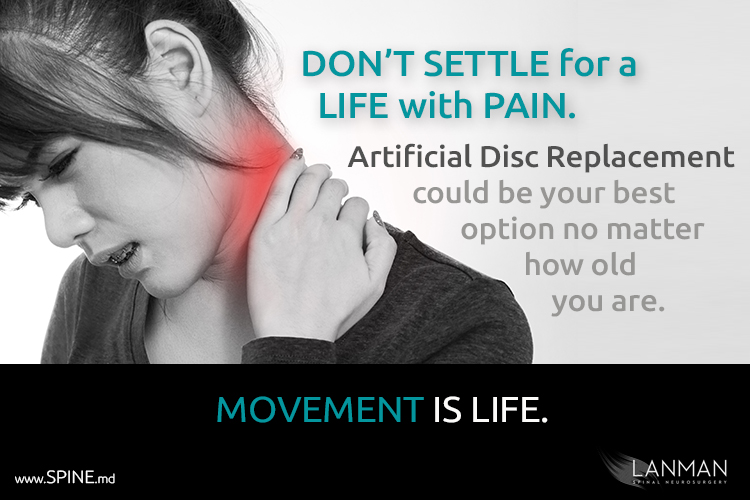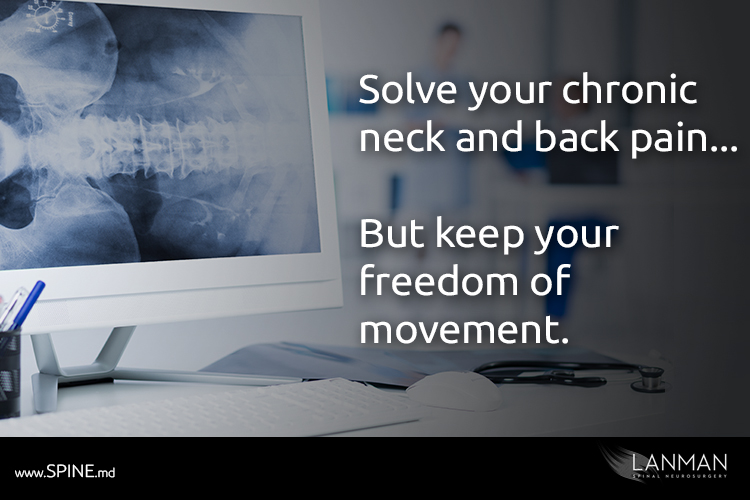How “Take it Easy” is really the last thing we should do.
As my grandparents got older, they were constantly encouraged to “take it easy.” And so they did. They became sedentary, spending more time sitting around playing cards and sipping drinks on the porch. As time passed, they grew weaker and weaker. With each day it seemed they grew less active and more dependent upon others to do things for them. That was years ago, and it’s no longer the way any of us prefer to be today. We want to be more functional and active as we age. We want to do things for ourselves. We want to be out walking, traveling, hiking, perhaps skiing, playing golf and tennis, and other activities that we enjoy.
We are living much longer than any previous generation. Many of us may likely live to 85 or 90 years old. Our children may live to be centenarians. Does that mean we’ll be a society of canes and walkers? Not necessarily. Yet it is hard to keep moving with chronic pain whether in the spine, hips, or elsewhere. What are our best options for maintaining normal movement and the highest possible quality of life?
It’s true that when we feel pain – resulting from degradation of the spine, discs, and joints, our initial inclination is to slow down. Pain forces us to limit our physical movement; it’s only natural to back off. The fact is, less
activity weakens muscles, causing atrophy, which weakens your entire body and leaves you vulnerable to increasing pain. Also, bones become weaker and we can get osteoporosis.
I’m not suggesting to just “suck it up” and push on. There are sensible alternatives that cannot only help you stay healthy and vital, but also mitigate the effects of aging, heal more quickly from injuries and surgery, and feel better about yourself. But “better” is not your best. You can be more than “better.” In fact, you can be greater than you’ve ever been.
KICKER: Pain is Your Wake Up Call
You might recall as a child hearing from your doctors that to remain in good physical shape, you need to maintain a healthy diet with lots of exercise. But many of us don’t understand the importance of this preventative regimen until it’s too late – when there’s a problem, and that problem begins affecting our daily lifestyle and wellbeing. We’re then all ears, but sometimes the damage has already been done.
Pain brings everything into sharp focus. We want to get better, so we’ll do just about anything to find a cure, heal, and go on with our lives. But the challenge is that once we hit 40 years of age or so, our bodies are less responsive to enhanced nutrition and exercise routines. So, no matter what we do, we will take longer to heal. It’s just a fact.
As we grow even older, we begin noticing that our muscles begin to lose mass and get smaller, while our belly fat increases. At about ages 45 to 55, many of us begin working out at the gym but give up after a few months because we do not observe the same rate progress we did at a younger age.
It’s not just about fitness and nutrition though. Testosterone production in men declines steadily after age 30. Men over 50 who have small arms and legs and more abdominal fat frequently have lower testosterone levels. Women after age 50 – when menopause hits and estrogen and progesterone production drops considerably – can often recall the exact month that they lost their waistline and their shape became more vertical.
THE KEY: Manage the pain, but keep the body moving.
In most cases, pain can be managed effectively. But once you heal, what then? What’s going to be your long-term strategy for being greater than “better”? First, we have to overcome our tendency to simply give up or reduce activity. Letting our life get removed from us one piece at a time.
Exercise programs can be designed to last 22-25 minutes three times a week. I like to use high-intensity intervals. Start with simple bands and weights. If your body can handle it, add daily planking for 20 seconds and work up to 1 minute or more after about a month. Work on balance
exercises instead of just strength training and cardiac conditioning. Try muscle toning with stretches. The key is consistency, but do not stretch to extremes in any direction. Use your phone’s calendar to schedule your routine with reminders.
You may need pain management with supplements or perhaps prescription anti-inflammatory medication. You could also look into hormone treatments to help your body reduce inflammation, which will help to further reduce pain. Keep in mind that what works for one patient may not work for another. There’s no secret schedule, no magic formula that addresses the varied physical and physiological issues. You have to find what works for you.
IS THERE: A cure without surgery?
A successful program may help you to manage pain without surgery. In fact, most of the patients we see for spinal conditions, for example, do not need surgery. We can address major issues with proper exercise and nutritional regimens. Sometimes we resort to pain management, which may involve a variety of treatments. In these cases, we refer patients to our pain specialists who design a customized program, especially if prescription medications are necessary.
It’s easy to feel safe because you do not feel pain today. Not long ago, a study was conducted where MRIs were taken on 100 asymptomatic patients whom had no complaints of spinal issues. Among these patients, two-thirds of them were diagnosed with degenerative disk disease, bulging discs, herniations, and mild arthritis.
The great news is that we can be proactive. We can take measures to be aware of our pain generators and do the things we need to do to manage our unique and personal needs. Movement is life – and the key is to keep moving.







